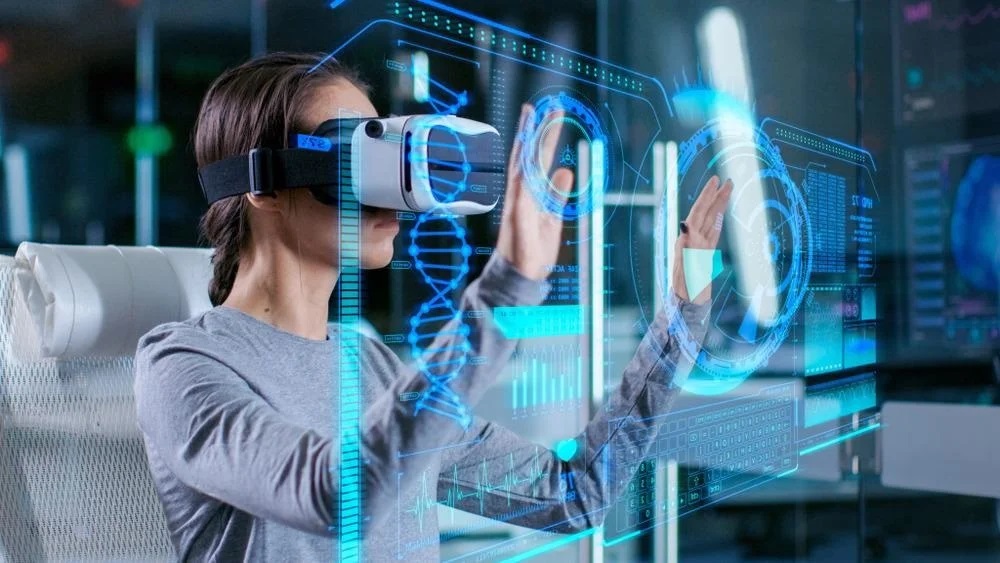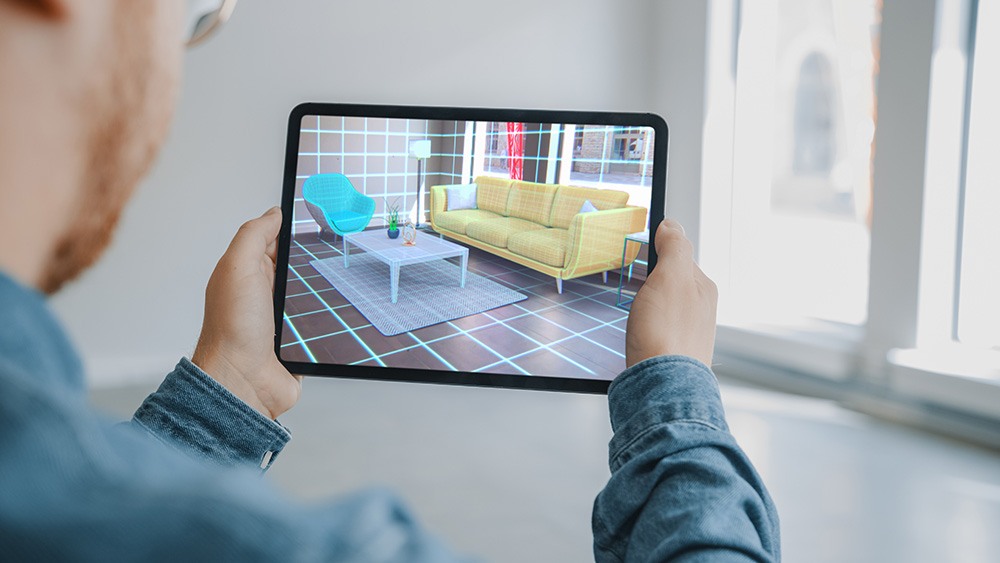Introduction
Augmented Reality (AR) is no longer just a futuristic concept or something limited to the realm of science fiction. It has rapidly evolved into a powerful tool that blends the virtual world with the real one, transforming how we interact with the environment around us. By overlaying digital content—such as images, sounds, and other data—onto the real world, AR enhances our physical surroundings, offering enriched experiences and new perspectives.

From entertainment and education to healthcare and retail, AR is revolutionizing many industries and becoming an integral part of our everyday lives. In this article, we will explore how AR is shaping various sectors and why it has the potential to change how we work, play, and interact with the world.
What is Augmented Reality?
Before diving into its applications, it’s essential to understand what AR actually is. Augmented Reality is a technology that superimposes computer-generated content—such as graphics, text, or audio—onto the real world, providing users with a combined experience. Unlike Virtual Reality (VR), which immerses users in a completely digital environment, AR enhances the existing environment without removing the user from the physical world.
AR experiences can be delivered through devices such as smartphones, tablets, AR glasses, and headsets, making it an accessible technology for a wide range of users.

Applications of Augmented Reality in Everyday Life
- AR in Entertainment and Gaming
One of the most popular applications of AR has been in the gaming industry. The global phenomenon Pokémon GO, launched in 2016, brought AR into the mainstream, allowing players to capture virtual creatures superimposed onto real-world environments through their smartphones. This game not only showcased the potential of AR but also demonstrated how the technology could create engaging and immersive experiences for users.
AR is also being used in various forms of entertainment, including movies, music, and live performances. For example, AR-enhanced concerts allow audiences to view holographic performances alongside live shows, creating an interactive and visually stunning experience. Similarly, AR is being used in movies to offer behind-the-scenes content, alternate endings, or interactive storylines, all accessible through a smartphone or AR glasses.
- AR in Education and Learning
AR has the potential to transform education by making learning more interactive, engaging, and accessible. Traditional learning methods often rely on static information presented in textbooks, but AR can bring subjects to life in real-time, helping students visualize complex concepts and engage with the material in a more hands-on way.
For instance, AR can create 3D models of historical events, scientific experiments, or anatomical structures that students can explore and manipulate. This can be particularly useful in fields like medicine, where students can practice surgical procedures or study the human body in a virtual environment before transitioning to real-life applications.
Moreover, AR offers immersive language learning experiences by providing real-time translations of text or spoken language. This can help learners practice pronunciation, build vocabulary, and engage with native speakers in more interactive ways.
- AR in Healthcare
In the healthcare sector, AR is having a profound impact on diagnosis, treatment, and medical training. Surgeons, for example, can use AR headsets to overlay medical images such as X-rays or MRIs onto a patient’s body, providing real-time visual guidance during operations. This enhances precision and reduces the likelihood of errors during complex procedures.

AR is also being used in medical education, where students can practice surgeries or explore virtual models of human anatomy in a more interactive way than traditional methods allow. Additionally, AR applications can help patients better understand their medical conditions by visualizing treatment plans, explaining procedures, or even simulating the effects of medications.
Furthermore, AR is being used in physical rehabilitation, where patients can perform exercises with real-time feedback. This helps therapists monitor progress and make adjustments in real time, making rehabilitation more efficient and effective.
- AR in Retail and E-commerce
Augmented Reality is revolutionizing the retail and e-commerce sectors by offering customers a more interactive and personalized shopping experience. AR enables users to visualize how products will look or fit in their homes before making a purchase. For example, furniture retailers like IKEA use AR apps that allow customers to place virtual pieces of furniture in their living spaces to see how they would fit or match with existing decor.
Similarly, clothing and accessory retailers are using AR to offer virtual fitting rooms, where customers can try on clothes or accessories through their smartphones or AR mirrors in stores. This reduces the need for physical fitting rooms and allows customers to try multiple options quickly and conveniently.
In the beauty industry, brands are leveraging AR to allow customers to try on makeup virtually. AR apps enable users to see how different shades of lipstick, foundation, or eyeshadow will look on their face without physically applying the products. This improves the shopping experience and reduces return rates in online sales.
- AR in Navigation and Travel
AR is enhancing navigation systems by overlaying real-time directions, landmarks, and points of interest onto the real world, making it easier for users to navigate unfamiliar places. For example, AR-enabled GPS systems can display arrows or instructions directly onto the road through a smartphone or AR windshield, offering more intuitive and precise navigation than traditional maps.
In the tourism and travel industry, AR is enriching travelers’ experiences by offering interactive guides, historical information, and language translations. Travelers can point their smartphone cameras at landmarks, monuments, or museums to access detailed information, audio guides, or visual overlays that bring history and culture to life. This creates a more immersive travel experience and allows visitors to explore destinations in a more meaningful way.
- AR in Real Estate and Architecture
The real estate industry is embracing AR as a tool to provide virtual property tours and design visualizations. Prospective buyers can use AR to explore homes remotely, visualize different layouts, or see how different design elements would look in a space. This not only saves time but also provides a more detailed understanding of properties before visiting them in person.
In architecture and construction, AR is being used to create 3D models of building designs, allowing architects, engineers, and clients to visualize projects before construction begins. This improves collaboration and helps identify potential design issues early in the process, reducing costly mistakes and revisions.
The Future of Augmented Reality
As AR technology continues to advance, its applications are expected to expand even further. With the development of more sophisticated AR glasses and headsets, AR will likely become more integrated into our daily lives, offering hands-free, immersive experiences in education, healthcare, retail, and beyond.

AR’s potential in industries such as manufacturing, agriculture, and logistics is also beginning to be realized. AR-powered smart glasses can provide workers with real-time instructions or diagnostic information, improving productivity and safety. Similarly, AR is being used in agriculture to provide farmers with data about crop health, soil conditions, and weather patterns, enabling more efficient farming practices.
Moreover, the convergence of AR with other emerging technologies such as Artificial Intelligence (AI), the Internet of Things (IoT), and 5G networks will further enhance AR’s capabilities, making it faster, smarter, and more accessible to users.
